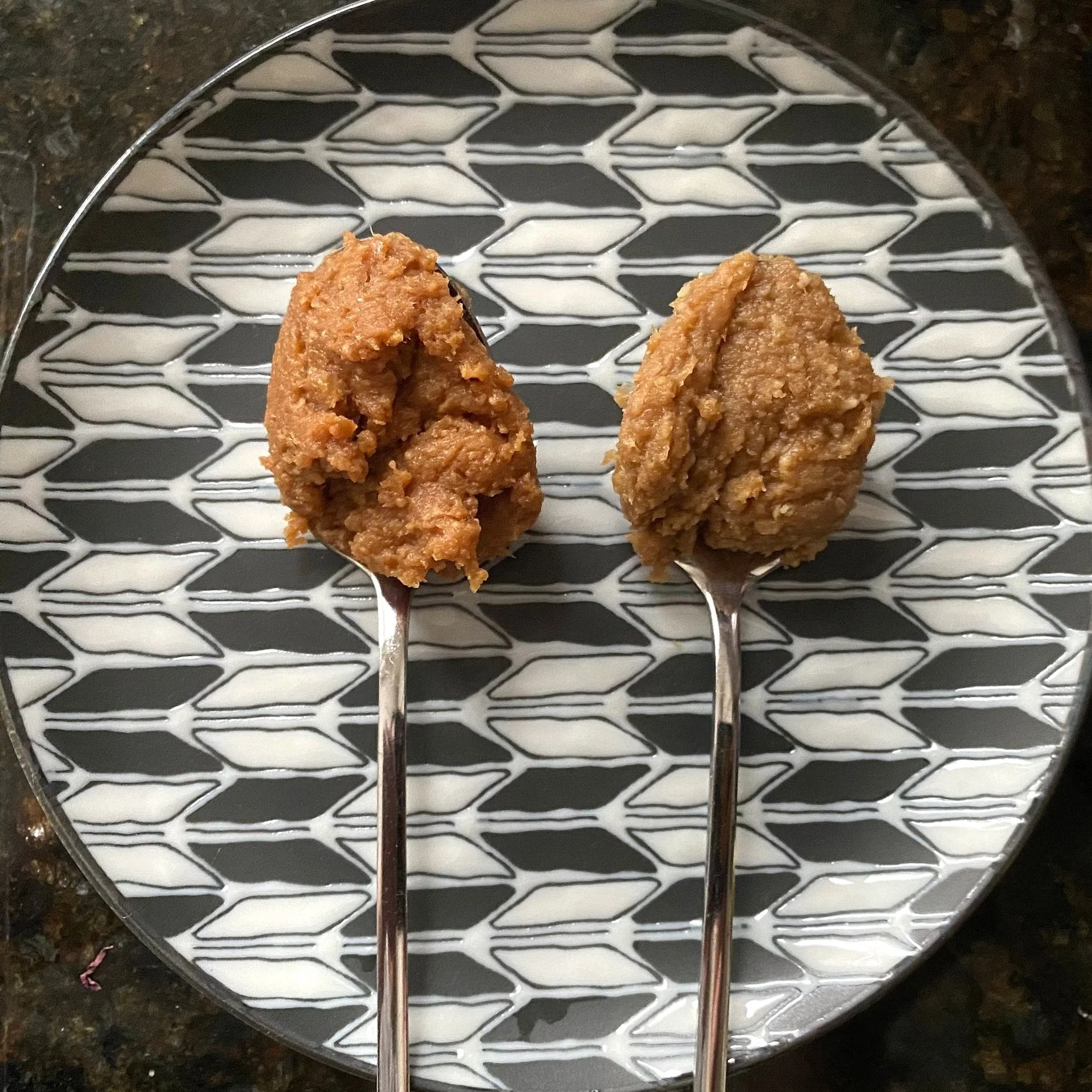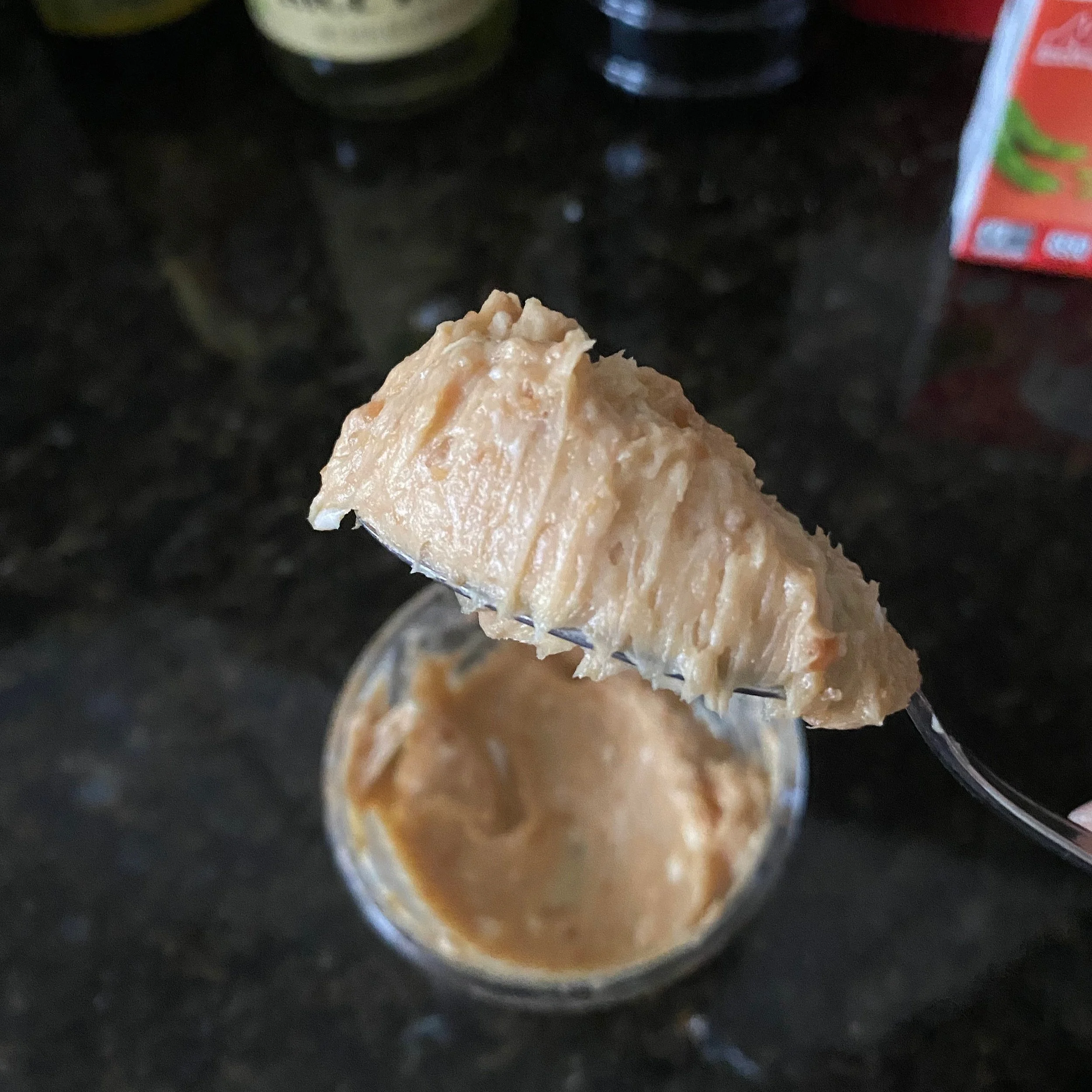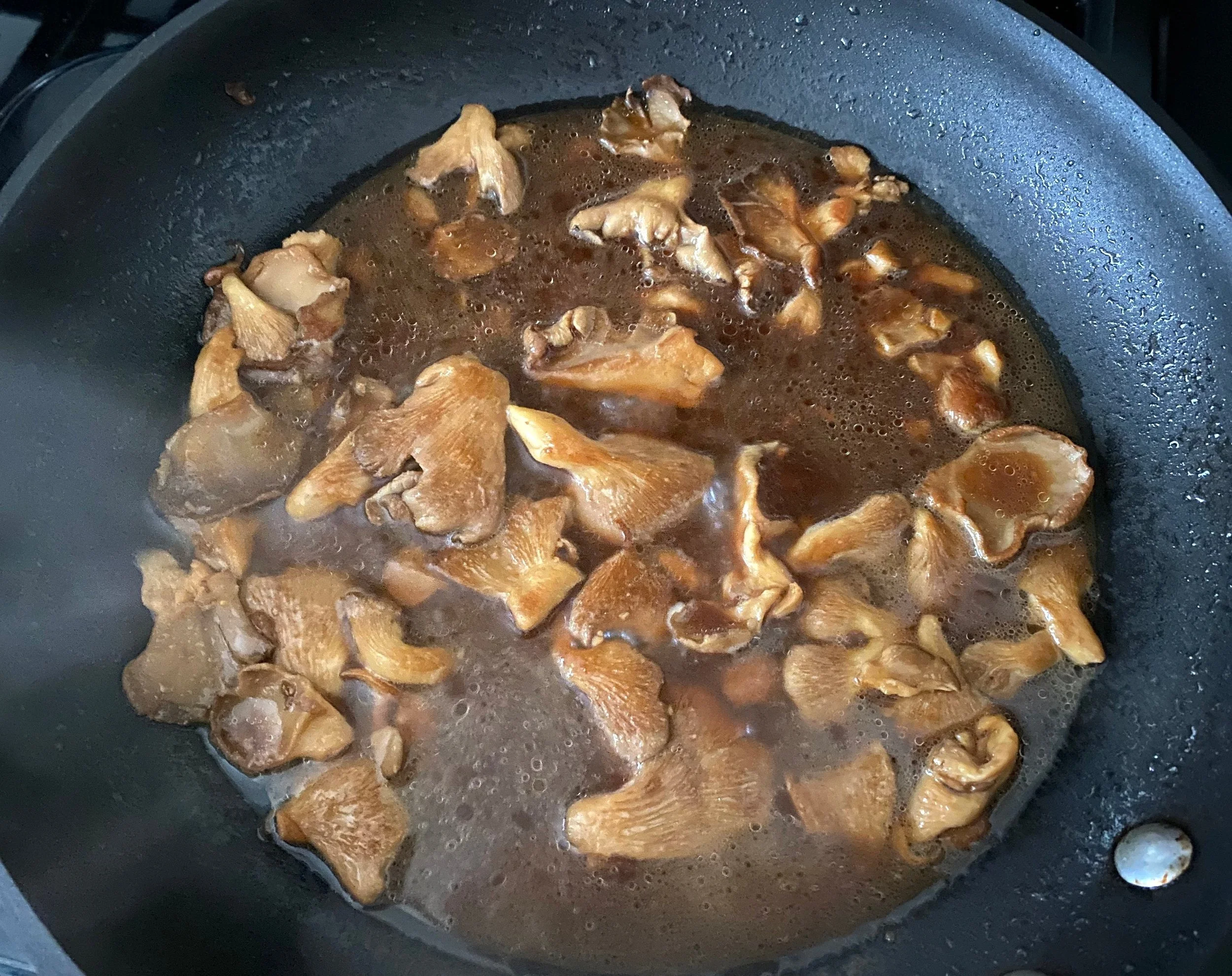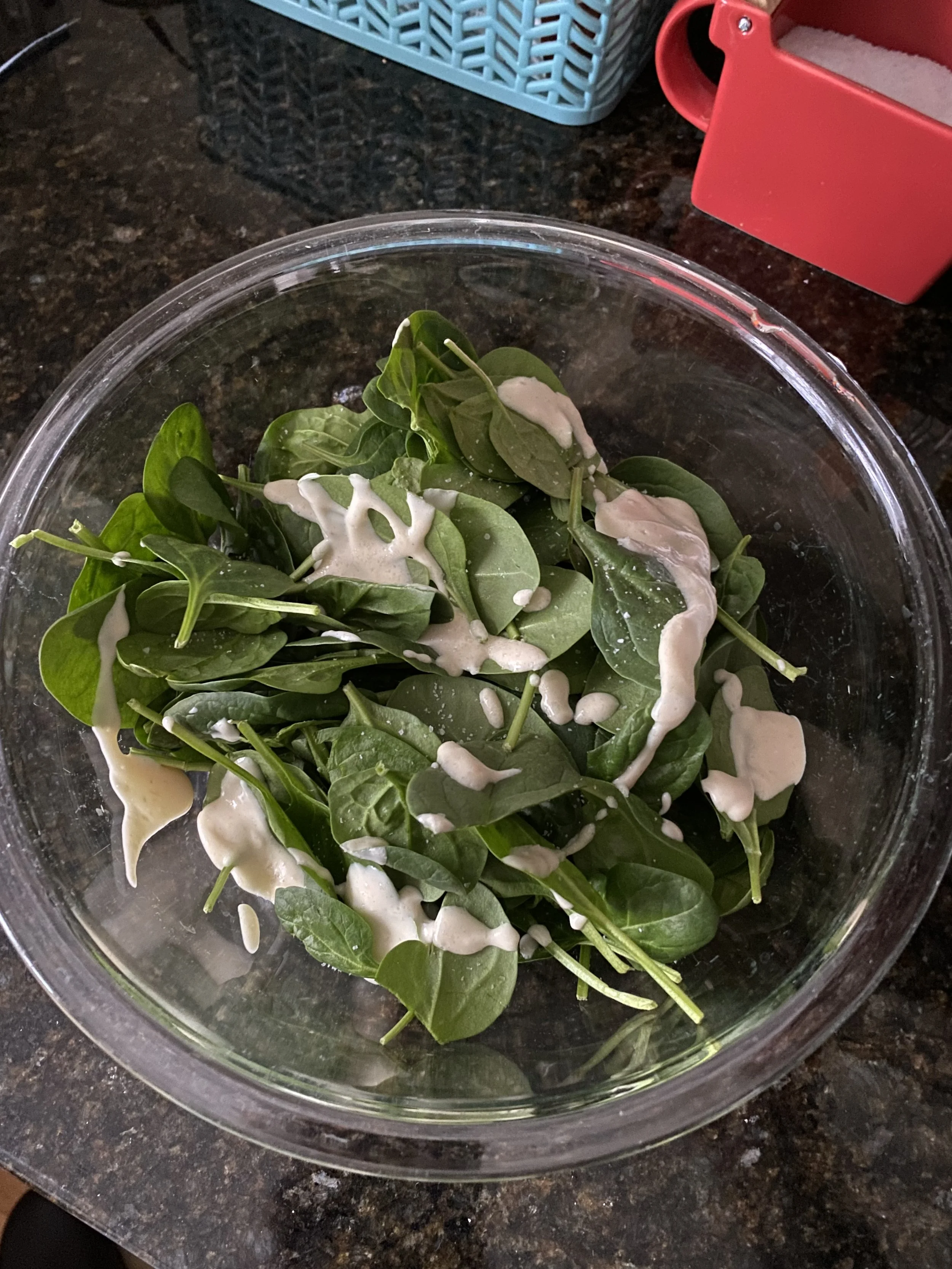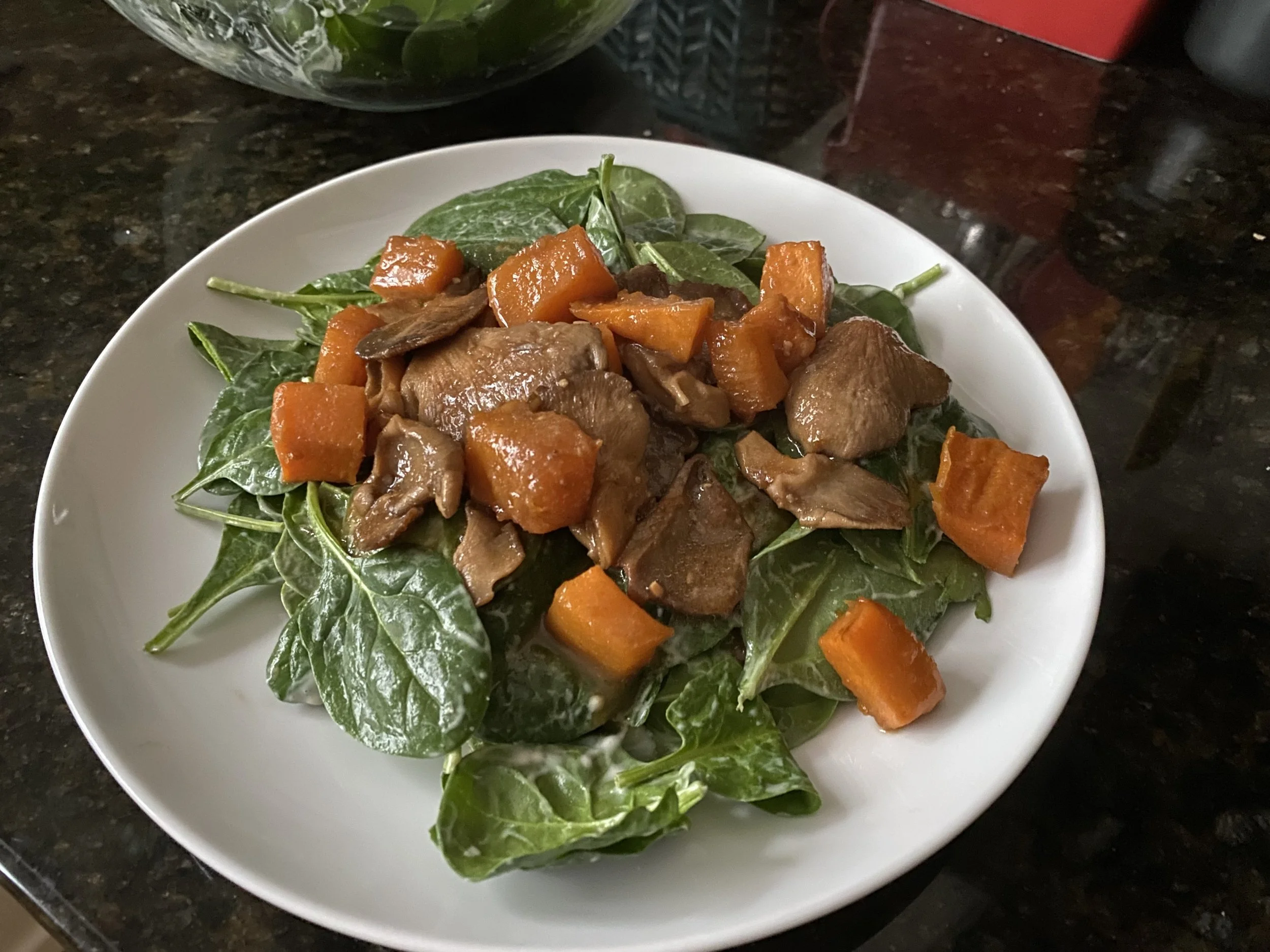Miso Mushroom Salad
My husband and I recently returned to Izakaya Minato in Portland, Maine on a weekend vacation to get out of the house and eat a bunch of delicious food. We first visited this restaurant two years ago with our bridal party during our bachelor(ette) trip. The meal we shared that night was my favorite of that celebratory weekend and started the trip off on the right foot.
An izakaya is a Japanese bar where small plates are served to accompany alcoholic drinks. Raw and cooked seafoods in addition to fried and grilled dishes are common fare at izakayas. Izakaya Minato does a lovely job elevating these foods while keeping them approachable.
One of the stand out dishes from the omakase - essentially the chef's tasting menu - was the Kinoko Salad, consisting of sauteed mushrooms and roasted delicata squash in a rich soy and butter sauce over lightly dressed baby spinach. The sweet squash and gently dressed spinach balanced the bracingly salty sauce perfectly. I was practically licking the plate clean just tasting and tasting and re-examining it.
I love warm salads, especially in the fall and winter. I knew after we ate that dish I wanted to make a version of it at home. I took photos, I took notes, I even gently pried the server with ingredient questions and got one hint: the sauce was made with miso butter.
red miso and sweet white miso side by side
Most of the savoriness of this dish comes from mushrooms and miso. Mushrooms are rich in monosodium glutamate, which gives them their savory flavor. Miso is a fermented paste made from cooked soybeans, rice koji (rice inoculated with the mold Aspergillus orzae), and salt. There are many different styles of miso, all of which show the vast array of flavors that can emerge from the same starting ingredients.
Given the unctuousness of the sauce, I knew I had to make a rich miso butter. I used twice as much butter to miso by volume, especially since miso can get salty quickly. Red miso, also called aka miso, was clearly the right choice for its saltiness and bold umami. It took me a few tries at the recipe to figure out when to add this element to the dish. Sauteeing the mushrooms in miso butter from the start risked scorching the miso before the mushrooms were browned. Waiting until the mushrooms were starting to brown to add the butter gave the miso and butter solids time to brown without burning. Also, saving half of the butter to fortify the sauce at the end meant you could get the richest sauce possible without overloading on butter.
A tip for softening butter
If you are like me and fail to pull your butter out early enough for it to soften, put what you need in a microwave safe dish and microwave the butter in 5-second bursts, stopping to stir in between. Usually my butter is soft but not melted with 2-3 bursts (10-15 seconds).
Most noticeable to me in my first iteration was that the sauce needed more umami. I had added soy sauce to bolster the briny savory notes in the sauce, but it was still a bit flat. After cleaning up for the night and settling into bed, I had a lightbulb moment. In the roasted onion soup recipe from Julia Turshen's Simply Julia, she uses the onion skins and off cuts to fortify the vegetable stock with more onion flavor. What if I built off this idea to make a quick 'stock' to fortify my sauce?
For the second version, I made a quick 10-minute infusion with the mushroom stems and tough bits and let it sit and continue to steep off heat until I was ready to make the sauce. It was a vast improvement flavor-wise, and while it involved an additional pot, it created little mess and gave my mushroom offcuts purpose before going into the compost bin. You can use any mushrooms for this; I found oyster mushrooms had the best texture, followed by shitake. I did a version with crimini (aka baby bella) mushrooms that worked, but was not my personal favorite.
What started as a bit of an afterthought became maybe my favorite standalone element of this dish: the creamy soy dressing. In my first go at this salad I almost forgot the salad had been dressed until I went back and looked at photos. In a bit of a panic, I dug through my refrigerator and found leftover silken tofu. I knew that had to be the base of my dressing.
Silken tofu is underrated as an ingredient. It can add great body and texture to sauces while contributing mild, slightly sweet and earthy flavor. With the addition of sweet white miso, rice vinegar, and neutral oil, you get a gentle dressing, almost like a thin mayonnaise, that coats and enhances the flavor of the greens without overpowering. In fact, the additional layer of miso and soy only added to the depth of the salad.
Miso Mushroom Salad
Serves 2 as a meal, 4 as a starter
1 cup of chopped, roasted winter squash or other root vegetables, cut into 1-inch pieces
1 Tbsp olive or neutral oil, for the roasted vegetables
8 oz of oyster or shitake mushrooms with stems
2 Tbsp unsalted butter, ideally softened
1 Tbsp red miso (also called aka miso)
¼ cup (2 ¼ oz) silken tofu (or other unpressed tofu product)
1 Tbsp sweet white miso
½ tsp Diamond Crystal kosher salt plus more to taste
1 Tbsp rice vinegar
4 Tbsp neutral vegetable oil, such as safflower or canola, divided
¼ cup sake (can be substituted with 3 Tbsp mirin or sweet sherry)
1 ½ Tbsp soy sauce
5 oz package of baby spinach
Roast your chopped winter squash or root vegetables with the olive oil and a good pinch of kosher salt in a 375°F oven until tender, about 20-30 minutes depending on the vegetable. Once tender, put the vegetables to the side for the moment. The vegetables can be roasted a day ahead if desired.
Prepare your mushrooms by cleaning them with a damp cloth as needed and removing the streams or tough parts. Put these parts in a small pot, cover them with 1 ½ cups of water and bring them to a rapid simmer, uncovered over medium heat for 10 minutes to make a stock. Once the time is up, remove the pot from the heat and let the steams continue to steep as the stock cools. You will have about 7 oz of stock.
As the stock bubbles away, start slicing or tearing your mushrooms into 2 inch pieces and make your miso butter and salad dressings.
To make the miso butter, blend the red miso with the softened butter and set it aside for the moment.
To make the creamy soy dressing, a stick blender is ideal but a standard blender may also be used. If using a stick blender, measure the silken tofu, sweet white miso, ½ tsp kosher salt, rice vinegar, and 2 Tbsp of the neutral oil into a tall, narrow container and blend until the dressing has thickened and the oil is fully incorporated. The dressing will have a bit of sheen, but no oil slicks. If you don't have a stick blender, use a blender and blend all ingredients except the oil. As the blender is running, slowly stream in the oil until it's fully incorporated. This makes about ½ cup of dressing.
In a wide sautee pan, heat the remaining 2 Tbsp of neutral oil over medium high heat until it is fluid like water. Add your mushrooms and saute until they are beginning to brown, about 5-8 minutes. The mushrooms will release their moisture first and then start to brown, so don't worry if the mix looks wet for a bit.
Once the mushrooms have started to brown, add 1 ½ Tbsp of the miso butter to the pan and cook until the miso starts to brown and smells nutty, about 1-2 minutes.
Deglaze the pan with the sake and use a wooden spoon or similar tool to scrape up the browned bits. Add ¾ cup of the mushroom stock and the soy sauce to the pan and let the liquid reduce by half, about 8-10 minutes at a rapid simmer. Add the squash about a minute before the sauce will be finished reducing.
Once the liquid has reduced, turn off the heat and add the remaining 1 ½ Tbsp miso butter, stirring the entire time until the butter has emulsified into the sauce.
In a large bowl or salad bowl, dress the baby spinach with as much or as little dressing as you like along with a pinch of salt. You can finish the salad by either garnishing the large salad bowl with the warm mushrooms and sauce or make up individual plates. Serve and enjoy while the mushrooms and roasted vegetables are still warm and the baby spinach still crisp.


